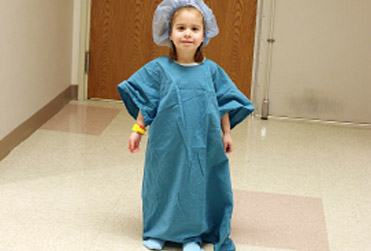benefits of office-based procedures

Safety - A recent study, "No Harm found When Nurse Anesthetists Work Without Supervision by Physicians", was published in the Aug 2010 issue of Health Affairs, the nation's preeminent health policy journal. It examined nearly a half a million individual cases in 14 states that removed the federal physician supervision requirement for nurse anesthetists between 2001 and 2005, revealing that patient outcomes had no difference between the states that do not require physician supervision and states that do, confirming that there is no difference in patient outcomes when anesthesia services are provided either by CRNAs, or physician anesthesiologists, or CRNAs supervised by physicians.
Comfort - There is a peace of mind for the patient and the doctor performing the procedure that there is a dedicated, qualified professional giving their undivided attention to minimizing the patient's pain and discomfort. The attention of a trained anesthesia provider creates optimal surgical conditions for the doctor to freely focus on the performance of the procedure, without distraction, for the best optimal result.
Economic - The May/June 2010 issue of Nursing Economic$ published a study that considered the different methods of anesthesia delivery in the US, which included CRNAs acting solo, physician anesthesiologists acting solo, and single anesthesiologist supervising one to six CRNAs. The results showed that CRNAs acting as the sole anesthesia provider cost 25% less. Aero Office Anesthesia provides a greater ease of accessibility to affordable quality anesthesia care appropriate to minor surgical procedures that would be cost prohibitive in a more expensive surgicenter or hospital with uninsured patients or patients with higher medical insurance deductibles.
Convenience - Instead of having to go to another unfamiliar location for the procedure, Aero Office Anesthesia provides the advantage of cutting down transportation time to a less intrusive environment, unlike a surgicenter or hospital. Aero Office Anesthesia allows for the procedure to be done in the doctor's office where the staff and patient have already been acquainted, cutting down on checking in and checking out procedures.
Liability - It is erroneous for anyone to state or imply that surgeons are at greater risk when they work with nurse anesthetists rather than anesthesiologists. A physician is not automatically liable when working with a nurse anesthetist; nor is the physician immune from liability when working with an anesthesiologist. Courts have held surgeons liable for the negligence of anesthesiologists when the surgeons had control of the anesthesiologists' actions. In Schneider v. Einstein Medical Center, 390 A.2d 1271 (Penn. 1978) and Kitto v. Gilbert, 570 P.2d 544 (Colo. 1977), the courts found the physicians liable for the negligence of anesthesiologists because the physicians were in control of the anesthesiologists' actions. The question, as in cases of a physician working with nurse anesthetists, is whether the physician was in control of the acts of the anesthesia provider, regardless if they are anesthesiologists or nurse anesthetists. This is a factual inquiry and not a conclusion of law.
There are many cases in which courts have found that the surgeon was not in control of the nurse anesthetist and, therefore, not liable for the negligence of the nurse anesthetist. E.g., Cavero v. Franklin Benevolence Soc'y, 223 P.2d 471 (Cal. 1950); Fortson v. McNamara, 508 So.2d 35 (Fla. 1987); Franklin v. Gupta, 567 A.2d 524 (Md. 1990); Hughes v. St. Paul Fire and Marine Ins. Co., 401 So.2d 448 (La. 1981); Kemalyan v. Henderson, 277 P.2d 372 (Wash. 1954); Parker v. Vanderbilt, 767 S.W. 2d 412 (Tenn. 1988); Pierre v. Lavallie Kemp Charity Hospital, 515 So.2d 614 (La. 1987); Thomas v. Raleigh General Hospital, 358 S.E.2d 222 (W. Va. 1987); Sesselman v. Mulenberg Hosp., 306 A.2d 474 (N.J. 1954). It is clear from the case law that in order for a physician to be liable for the acts of the anesthesia administrator, the physician must control the administrator's actions and not merely be supervising or directing the administrator.
In a January 1988 report of the Center for Health Economics Research (CHER), an independent Boston-area based research organization that analyzes and evaluates health-related policy issues, CHER concluded that "both legal doctrine and case history (as reviewed by the AANA and ASA) do not indicate a tendency on the part of the courts to hold surgeons liable more often when they work with nurse anesthetists than with anesthesiologists."
